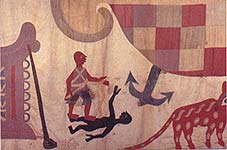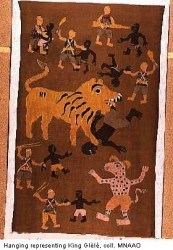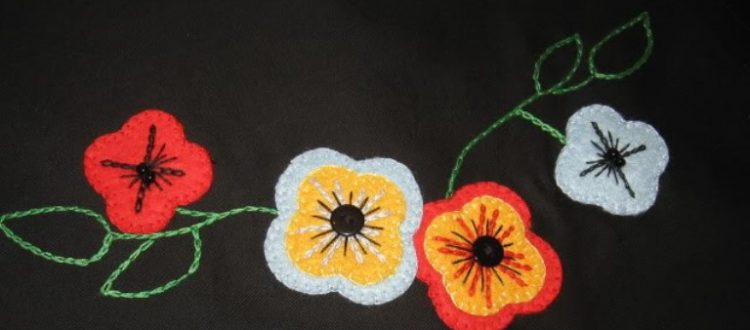This is the first part of this 3-part article about the history of applique banners and the shift to dye sublimated polyester fabric banners. Let’s start off with the history before diving into the dye sublimated banners.
Question: I am planning a medieval themed wedding and would like to know the best way to make or buy cloth fabric banners for our celebration?
Making appliquéd fabric banners would be the most authentic way to accomplish this, but it will depend entirely on your budget. Appliquéd cloth banners are an art form and require some sewing skills akin to quilting, although possibly a bit more complex than quilting.
The word “appliqué” comes from the French word appliquer, which simply means to “put on” or “apply.” Essentially, you cut out your lettering and/or designs and apply them, typically with either a fabric adhesive or by sewing, to the main cloth substrate or banner.
The History of Appliqued Fabric Banners
First, because I love history, a bit of history on appliquéd cloth fabric banners. According to Joseph Adandé, Assistant Professor of History of Art at the UniversitéNationale du Bénin, appliquéing began in the Kingdom of Danhomè in the area now known as Benin.
 This kingdom was known for its banners that were initially used at funerals of the wealthy and the monarchy under King Agadja (1708-1740) as a mark of friendship for the family of the deceased. France conquered the Kingdom of Danhomè around 1894, and imported the art of appliqué to France and Europe from there.
This kingdom was known for its banners that were initially used at funerals of the wealthy and the monarchy under King Agadja (1708-1740) as a mark of friendship for the family of the deceased. France conquered the Kingdom of Danhomè around 1894, and imported the art of appliqué to France and Europe from there.
King Agadja had in turn brought appliqué art from the voodoo artists of a conquered tribe near or in modern day Benin who wore appliqued skirts of many colors. He wanted to be dressed like that, and this is reputedly where the source of appliquéd cloth banners in the West came from.
Initially, appliquéd fabric banners were, by necessity, monochromatic, with the various fabric colors being simple designs that didn’t overlap. In 1727, however, upon the conquest of Whydah by King Agadja, the way was opened for cloth that was manufactured in the west, and appliquéd fabric banners and clothing became very popular amongst the wealthy.
The Appliqué Technique
 “Tacking” is the process of placing one piece of cloth onto another and holding it in place with straight pins or, in modern times, a temp adhesive may also be used, in order to be able to move the pieces around to get the perfect arrangement.
“Tacking” is the process of placing one piece of cloth onto another and holding it in place with straight pins or, in modern times, a temp adhesive may also be used, in order to be able to move the pieces around to get the perfect arrangement.
As art, it simply means the artist chooses a base fabric (mono or multi-colored,but most often white or black), then other fabrics, cuts them to the desired shape, and attaches them to the base fabric, usually a fabric with strongly contrasting tones and color in comparison to the base fabric.
Once the pieces are arranged to the artist’s satisfaction, he or she hems the pattern into the background fabric, typically leaving a frame around the appliqué similar to a picture frame, although this is not always the case with some artists.
In Part Two, I’ll continue the history of appliquéd cloth fabric banners and their royal origins.
Popular Posts:




